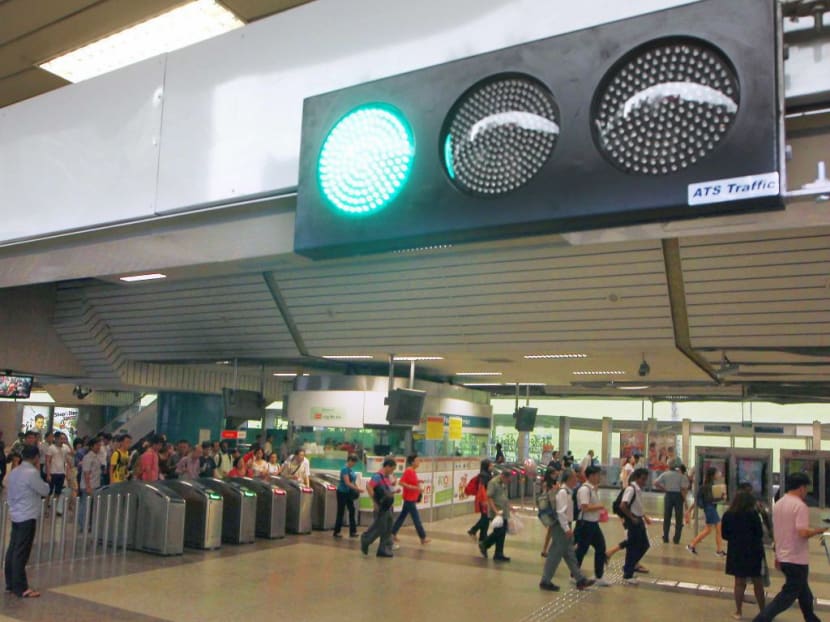SMRT tries again after scrapping rollout of ‘traffic light’ system showing crowd levels
SINGAPORE — Rail operator SMRT’s latest move to improve its mobile app to show colour codes reflecting congestion levels at the stations comes four years after a “traffic light” system installed at the stations themselves failed to take off.
SINGAPORE — Rail operator SMRT’s latest move to improve its mobile app to show colour codes reflecting congestion levels at the stations comes four years after a “traffic light” system installed at the stations themselves failed to take off.
In 2014, it was announced that following positive feedback, the system — piloted at Ang Mo Kio and Tanjong Pagar MRT stations — would be rolled out to 10 other stations by the first half of the following year.
However, SMRT told TODAY on Monday (Feb 5) in response to queries that the planned rollout did not happen. It did not explain why.
The system — which uses green, amber and red lights to indicate how crowded MRT station platforms are — had drawn mixed reactions, with many pointing out that it would be too late for commuters to find out such information when they are already at the stations. The system remains in use at the Ang Mo Kio and Tanjong Pagar MRT stations.
The improvements to the SMRTConnect app announced on Monday include the use of the three colours: A green icon indicates normal service, while an amber indicator means commuters have to wait for two trains before they can board, and red indicates four or more trains. In addition, a black icon marked with a cross means there is no train service.
While the new initiative addresses some of the shortcomings of the “traffic light” system, experts and commuters interviewed said there is room for improvement.
Transport consultant Tham Chen Munn said the app is “quite user-friendly” but suggested that SMRT include the reasons for delays. “Otherwise, it could cause commuters more unhappiness,” he said.
Commuters would probably expect an assessment of crowds based on “real-time information”, said Singapore University of Social Sciences transport economist Walter Theseira.
“It is a good move (but) I note that the data on crowding is based on historic patterns of observation. This seems quite archaic given that (a real-time based information system) already exists for traffic congestion (on the roads),” said Dr Theseira.
Currently, indicators are updated based on assessments of crowds by SMRT crew members at the stations during peak and off-peak periods.
Dr Theseira also suggested integrating other information related to public transport, including data from Google or Apple maps, into a single app. “I think most commuters prefer not to have to maintain more than one app for travel planning and monitoring,” he said.
Undergraduate Elgin Chong, who tried using the app, said it helps him plan his journeys in advance, but he was also concerned about the accuracy of the information.
“While there are many apps out there that estimate the arrival time and congestion of buses, I don’t think there are any similar services for trains. My only concerns are that the crew may wrongly assess or exaggerate the (congestion) situation, and that private-hire vehicle fares would surge,” said the 23-year-old.
SMRT said that in time, it plans to tap data and video analytics to gauge the crowds at MRT stations, amassing information from fare gates, camera feeds in the stations and Wi-Fi access points to give speedier updates on train services. It aims to roll out these improvements later this year. ADDITIONAL REPORTING BY KENNETH CHENG







